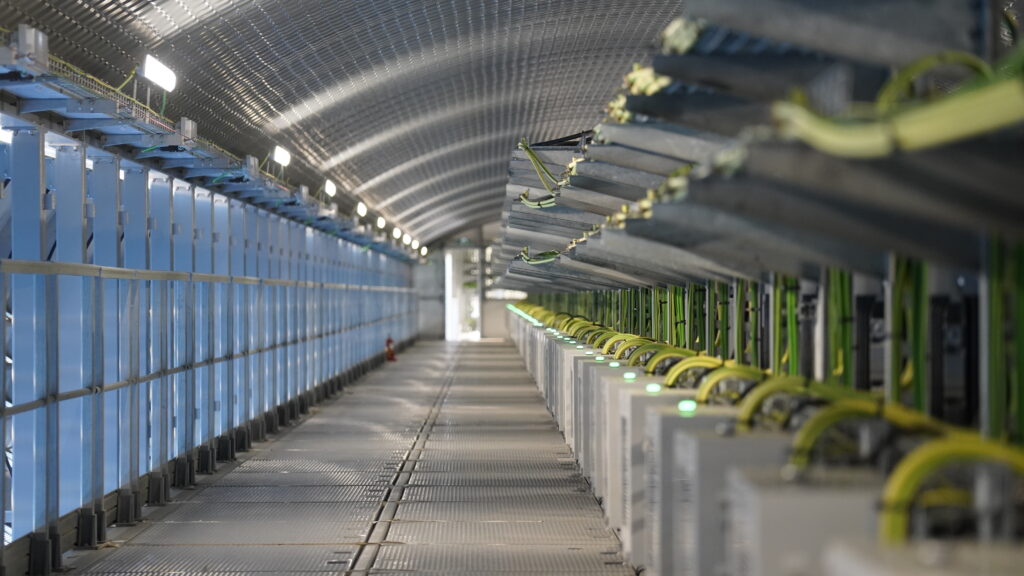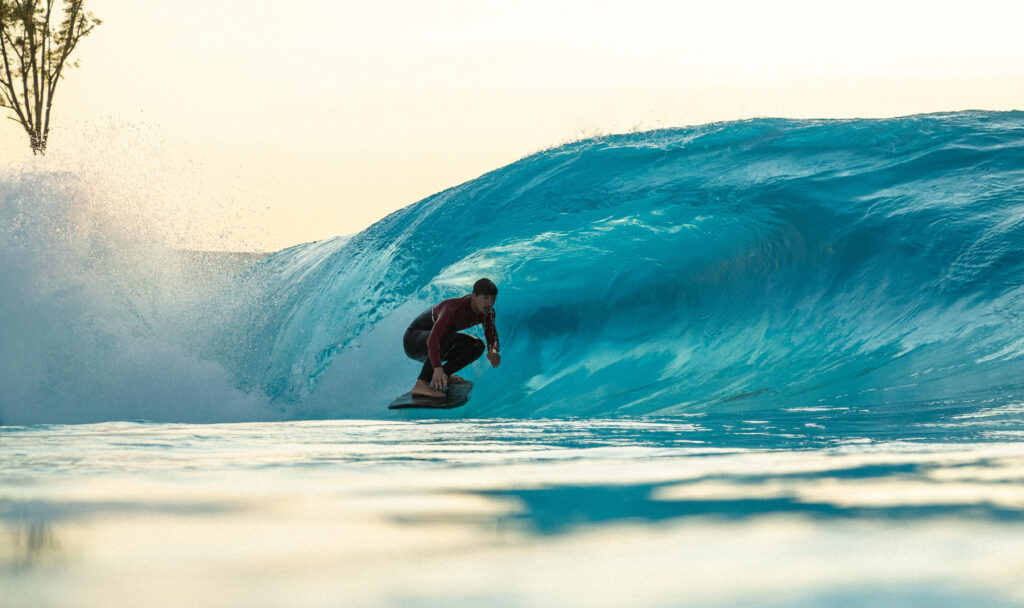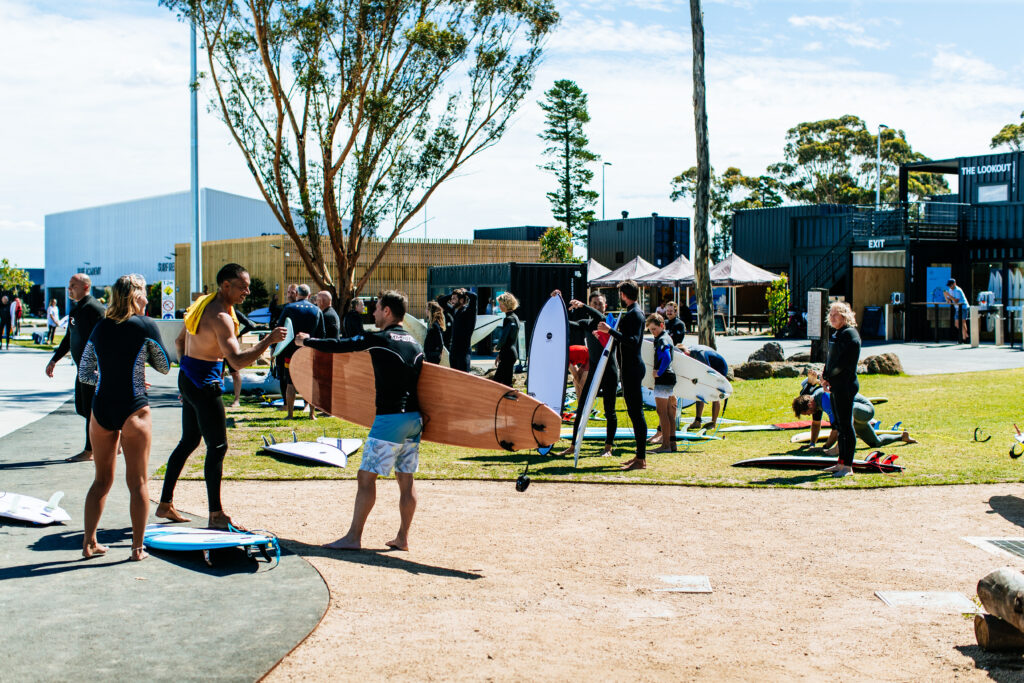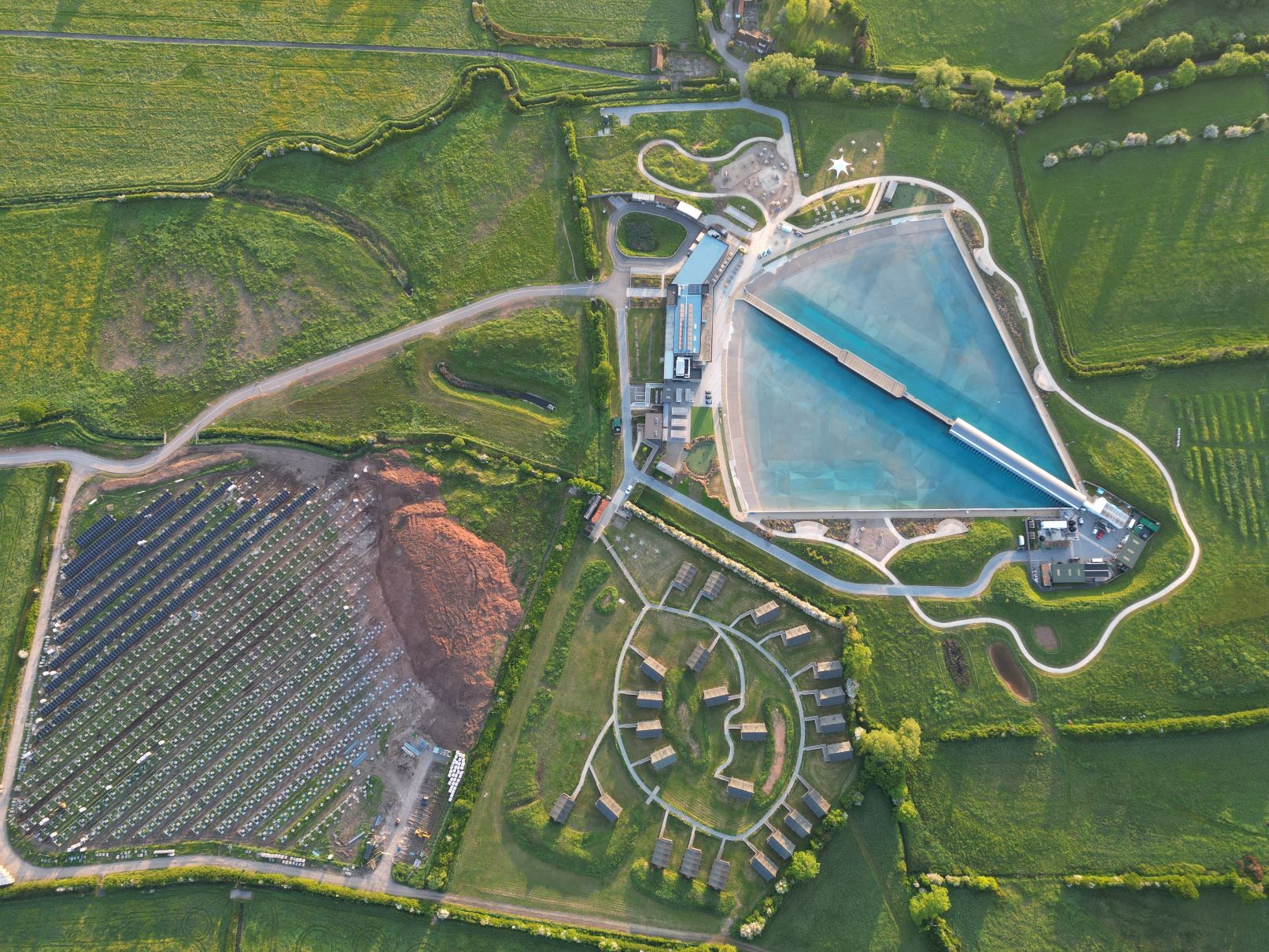It is our aspiration that every Wavegarden surf facility is built, delivered and operated with the upmost respect for nature and our environment while becoming a destination for people of all ages, all abilities and all backgrounds to try surfing, exercise, and be more active and healthier. Our goal is to achieve a “Net Positive Impact” by delivering a long list of social and economic benefits to the communities in a sustainable and responsible manner.
Wavegarden facilities are designed to blend into the natural surroundings, requiring minimal civil engineering work and causing very little visual and auditory effect on the surrounding environment. The wave generating machinery is designed to recuperate and reuse part of the energy created in the wave generation process and with little energy lost in the transmission of forces from the machinery to the water, efficiency levels could not be any higher.
Sustainable design and construction is the practice of creating structures and processes that are environmentally responsible and resource efficient throughout the life cycle of a business venture – from site selection to design, construction, operation, maintenance, renovation, and finally, deconstruction. We reduce the concrete with waterproofing systems, reducing the carbon footprint by 90%.
Wavegarden follows five fundamental principles of sustainable practices to help safeguard our natural environment:
The selection of the most appropriate site is a first and primary concern for Wavegarden. We work with our development partners to consider the potential environmental impact on the location, considering factors such as transportation, biodiversity, noise, light, and many other factors.
We aim to avoid the exploitation of environmentally sensitive areas, conserving land and wildlife habitats by encouraging the development of areas with the appropriate zoning and existing infrastructure. Further, we aspire to conserve existing natural zones and restore damaged areas to create and promote native species habitats.

Wavegarden seeks to implement a sustainable drainage strategy on all projects, optimizing green and permeable areas via sustainable landscaping. Additionally, the Wavegarden Cove can work as a storm water attenuation surface that redirects extra water into a reservoir tank for later use.
The design of the footprint and approach to civil works is undertaken in a manner to achieve the most efficient balance with the natural surroundings. We seek to achieve a neutral ground balance, thus avoiding a greater impact on the CO2 footprint of the construction.
Some of our projects are developed on sites where we can fix water or soil contamination and deliver net environmental benefits. For example, Surf Snowdonia, our project in North Wales (U.K.), was constructed on a unused, contaminated former steelworks site and now is in better condition than previously.
The Wavegarden Cove is the most energy-efficient technology in the sector – using 10 times less energy than the pneumatic systems used by most other surf park developers.
We have reduced the energy consumption of waves to obtain average figures between 0.3 – 1 kWh per wave, depending on their size and power. In normal operation, the Wavegarden Cove machine, water treatment system and other systems (lighting, cooling, sensors, etc.) consume c. 455 kWh per 1hr session. Consumption drops to 325 kWh if these are not included.
In addition, the power consumption of a Wavegarden is continuously monitored and analysed to identify opportunities for additional energy savings. Our engines become energy generators when they have to brake the generated hydrodynamic force, thus recovering up to 15% of the energy.
Our public facilities in the UK, Switzerland, Australia, South Korea and even our private demo center in Spain obtain 100% of their energy requirements from renewable sources. However, there is the potential to go even further. As the energy consumption of the Wavegarden technology is so low, we are able to develop plans to deliver completely energy self-sufficient systems with the use of photovoltaic panels. Our objective is to be 100% “CARBON NEUTRAL”.

Depending on energy costs, accessibility and the total number of hours of sunshine per day, Wavegarden is able to provide solutions based on renewable energies from our own generation and grid, customized to each project to minimize CAPEX and OPEX.
Finally, we are working on a method to recover heat from the wave making system to heat water required for domestic use, or to heat the surf park buildings. The lagoons water can be used to increase the efficiency of air conditioning systems in the surrounding structures.
All Wavegarden lagoons are designed to make the best quality and quantity of waves with as little water as possible.
The largest Wavegarden Cove surfing lagoon is a closed circuit basin that requires approximately 25,000m³ of water. No emptying or refilling is necessary, except to compensate for evaporation losses. Since the water does not need to be renewed, the water is not “lost”.
Furthermore, the Wavegarden systems are monitored to identify opportunities for additional water savings by tracking water consumption.

We have developed our own Water Treatment Technology that is specifically designed for the Wavegarden Cove to help conserve water. As such, the Wavegarden Cove can be considered as a water storage lake, given that the water quality is kept in perfect condition.
Typical annual water consumption of a Wavegarden Cove vs. similar facilities:
At our facility in Melbourne, 100% of the water required comes from grey water supplied by the adjacent airport. Other projects will recover rainwater from adjacent housing facilities, store it, and then use it as a means of filling the lagoon. We promote the use of natural waters (wells, rivers, lakes) avoiding the supply of mains water. The water from our lagoons can be poured into any environment without causing damage to the ecosystem.
Wavegarden recognizes that it is also important to use recyclable materials and source them locally, where possible. For the surf park as a whole, we encourage our development partners to use products and materials for which life-cycle information is available and that have lower life-cycle impact. All structural materials are recyclable.
Our standard lagoon design involves a construction solution whereby almost the entire bottom of the lagoon is created with a recyclable liner that is laid on the ground, reducing the need to concrete large areas. Concrete is typically only used in the side walls and the central plinth foundation, which supports the machine room structure. This represents only 3% of the total surface of the lagoon.

The materials used in the construction of our lagoons are non-toxic and can be recycled in the future, as required. The modular construction of the wave generator allows the re-use of the many elements.
All structural elements are free of persistent, bio-accumulative and toxic (PBT) chemicals linked to the life cycle of construction materials. Lead, cadmium and copper are not used in the machinery or structures.
Moreover, we measure and minimize the impact of artificial light and noise of the surf park on the environment by promoting a green masterplan, which subsequently avoids the “heat island effect”.
Wavegarden has prepared operational and maintenance policies and procedures for the surfing lagoon based on our many years of experience in this sector.
As such, we are able to specify systems, materials and procedures that streamline and simplify all necessary practices. These procedures, for example, ensure that the consumption of water, energy, chemicals and cleaning products is minimized. We ensure practices are cost effective in the short and long term.
At Wavegarden, we work with our partners to build the most sustainable experience, from operating the waves to the sustainable habits promoted in the facilities, providing specific guidelines for every step on the value chain.

During the operational phase of each surf park, we strongly recommend the implementation of a series of sustainable practices, including:
All appropriate measures are taken to minimize the impact on our natural environment. All of our projects are typically subject to an independent “Environmental Impact Assessment” to support project approval.